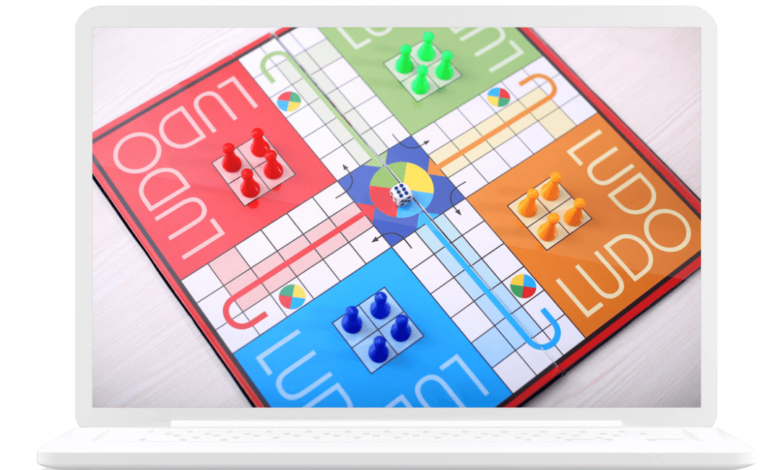How to Create Engaging Multiplayer Experiences in Ludo and Rummy Games

In today’s competitive gaming market, creating engaging multiplayer experiences is essential for the success of any game, especially for popular board games like Ludo and card games like Rummy. Whether you’re working with a Ludo Game Development Company or building your own Rummy Game, designing an experience that keeps players coming back for more can be the difference between success and failure. Let’s explore key strategies to craft immersive multiplayer gameplay in both Ludo and Rummy.
1. Real-Time Multiplayer Functionality
A core feature in multiplayer games is real-time interaction. Both Ludo and Rummy thrive on the excitement of competing with live players, and offering this option creates a more immersive experience.
When developing these games, ensure that your platform supports stable, real-time multiplayer functionality. Players should be able to invite friends or challenge random players from across the globe seamlessly. Ensuring smooth connectivity and minimizing lag is crucial, especially when the stakes are high in a Rummy Game or when a player is on the verge of winning a Ludo match.
2. In-Game Chat and Communication
Communication between players enhances engagement and fosters a community-like feel within the game. Allowing players to chat with each other while playing can make the experience more interactive and enjoyable.
For instance, adding emojis, text chats, and voice options will make the game feel more personal. Players can celebrate victories or comment on game moves, making the overall gameplay more dynamic. Many Rummy Game Development experts integrate social features like these to keep players entertained beyond just the game mechanics.
3. Dynamic Leaderboards and Ranking Systems
Competition drives engagement in multiplayer games. By incorporating leaderboards and ranking systems, you give players a reason to keep playing, pushing themselves to improve.
Both Ludo and Rummy lend themselves well to this structure. Players should be able to track their progress and see how they stack up against their friends or other global players. Regularly updated rankings and offering exclusive rewards for top performers can boost replay value, especially in a competitive multiplayer environment.
4. Customizable Avatars and Player Profiles
Personalization helps players feel more connected to the game. Offering customizable avatars, profiles, or even in-game tokens enhances the social aspects of both Ludo and Rummy.
Allowing players to choose their unique avatars or customize their profiles brings a sense of ownership to their game experience. Many Ludo Game Development Companies now integrate various personalization features that allow users to create a recognizable in-game presence, whether it’s through avatars, badges, or themed boards and card designs.
5. Cross-Platform Functionality
To truly create an engaging multiplayer experience, it’s essential to allow players to compete across various platforms. Whether they’re on a smartphone, tablet, or PC, your Ludo or Rummy game should be playable across different devices.
By partnering with an experienced Ludo Game Development Company, you can ensure that the game functions well on Android, iOS, and web platforms without losing any quality. Cross-platform compatibility increases the player base and makes the game accessible to more users, which fosters a more competitive and engaging multiplayer community.
6. Tournaments and Special Events
Adding time-bound tournaments and special events can spike engagement levels and keep the player base active. This is especially true for Rummy Game Development, where tournaments provide an opportunity for players to showcase their skills and earn rewards.
You can host daily or weekly challenges, or even introduce seasonal tournaments where players can win special prizes. By regularly updating these events, players will stay motivated to return to the game for fresh challenges and bigger rewards.
7. Seamless User Interface and Intuitive Controls
In both Ludo and Rummy, it’s essential to ensure that the game is easy to navigate, especially in a fast-paced multiplayer setting. Players should be able to access the game modes, join rooms, and engage in gameplay without any unnecessary friction.
An intuitive design keeps players focused on the game itself, not on how to control it. Collaborating with a skilled Rummy Game Development team will ensure that the interface is seamless and the overall player experience is smooth.
8. Secure Payment Integration for Real-Money Games
Incorporating real-money gameplay can enhance engagement, especially for Rummy. Players enjoy the thrill of playing with stakes, and secure payment options make this possible. However, ensuring robust security features is crucial to protect players’ sensitive information.
Many Rummy Game Development companies integrate secure payment gateways and anti-fraud systems, allowing players to enjoy real-money games without worrying about security issues. Transparency in transactions and a quick, easy withdrawal process further enhances player satisfaction.
Conclusion
To create a truly engaging multiplayer experience in Ludo and Rummy, game developers need to focus on several key elements: real-time interactions, dynamic competition, cross-platform support, personalization, and secure gameplay. By partnering with an expert Ludo Game Development Company or Rummy Game Development team, you can ensure that your game stands out in the crowded gaming market.
With the right combination of features and smooth user experience, your multiplayer Ludo or Rummy game can achieve lasting success, keeping players engaged and coming back for more!



